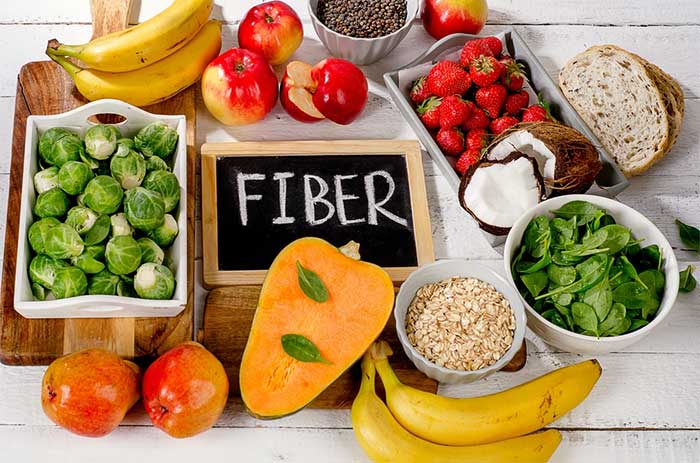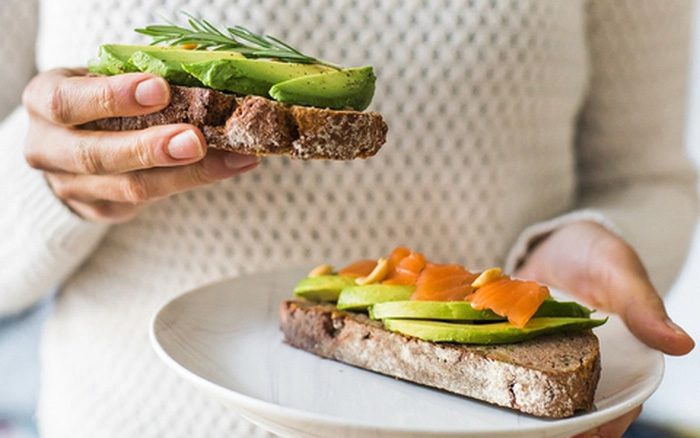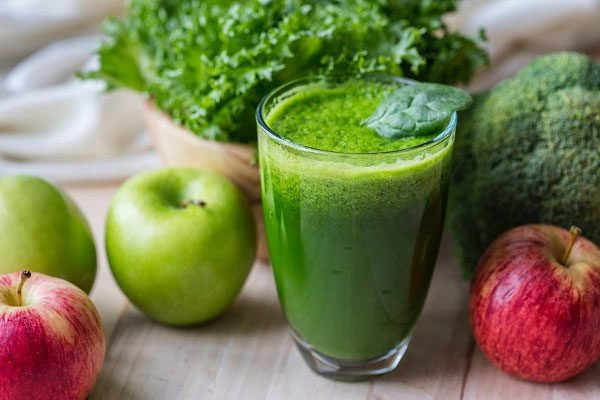To supplement fiber in the body, one should eat whole pieces of vegetables rather than fiber that has been ground into powder – this perspective has left many confused about whether they are consuming fiber correctly.
Eating whole pieces of vegetables and fruits is essential for creating fiber strands; is grinding them down into powder “meaningless”?
Recently, a trend on TikTok has emerged, suggesting that to supplement fiber in the body, one must eat whole pieces of vegetables instead of fiber that has been ground into powder. According to this viewpoint, our bodies need vegetables to provide fiber, specifically the structural fiber or fiber strands (fiber matrix) found in the vegetable system. Rather than consuming fiber in powdered form, eating whole vegetables provides the necessary structure for fiber. In summary, eating whole vegetables is beneficial, while grinding them into powder renders them “meaningless.”

Fiber is primarily found in fruits, vegetables, whole grains, and legumes.
Dr. Le Bach Mai (Former Deputy Director of the National Institute of Nutrition) noted that fiber is mainly found in fruits, vegetables, whole grains, and legumes. They are best known for their ability to prevent or alleviate constipation. Foods high in fiber also offer other health benefits, such as maintaining a healthy weight, reducing the risk of diabetes, cardiovascular diseases, and certain types of cancer…
Experts agree that fiber is essential for the body every day. Consuming fiber in its raw, unprocessed form is indeed best for the body, especially compared to drinking juices… However, experts believe that fiber in its ground form is also beneficial and not at all meaningless as some users claim. It is important to ensure that whole foods are used before grinding.
“For young children, it is advisable to let them eat whole pieces and consume whole foods as it provides fiber while also helping them develop chewing and swallowing reflexes,” the expert added.
So, what types of fiber are there exactly? How should we supplement them correctly? What is the recommended intake for each age group? Let’s see what the experts have to say below:
What is Fiber?
According to the Mayo Clinic, fiber, also known as roughage, includes parts of plant foods that your body cannot digest or absorb. Unlike other food components such as fats, proteins, or carbohydrates (which the body breaks down and absorbs), fiber is not digested by your body. Instead, it passes relatively intact through the stomach, small intestine, colon, and out of your body.
There are two types of fiber: soluble fiber and insoluble fiber. Specifically:
- Soluble Fiber: This type can dissolve in water and form a gel-like substance. It can help lower cholesterol and blood glucose levels. Soluble fiber is found in oats, peas, beans, apples, citrus fruits, carrots, barley, and psyllium.
- Insoluble Fiber: This type promotes the movement of material through your digestive system and increases stool bulk. Therefore, it can be beneficial for those with constipation. Whole wheat flour, wheat bran, nuts, beans, and vegetables like broccoli, green beans, and potatoes are excellent sources of insoluble fiber.
The amounts of soluble and insoluble fiber differ among various plant foods. To gain the most health benefits, eat a variety of fiber-rich foods.

To gain the most health benefits, eat a variety of fiber-rich foods. (Illustrative image).
How Much Fiber Should You Consume Daily?
According to Dr. Le Bach Mai, both soluble and insoluble fiber are essential for your body every day. As long as your body receives enough fiber daily, it helps maintain good health.
The National Institute of Nutrition recommends that everyone should increase their fiber intake in their daily diet. The best way to supplement fiber is through natural foods. Specifically:
- 1 – 2 years: 19g/day.
- 3 – 5 years: 20 – 21g/day.
- 6 – 7 years: 22 – 23g/day.
- 8 – 9 years: 24 – 26g/day.
- 10 – 11 years: 26 – 28g/day.
- 12 – 14 years: 26 – 31g/day.
- 15 – 19 years: 26 – 38g/day.
- 20 – 49 years: 25 – 38g/day.
- 50 years and older: 21 – 30g/day.
- Pregnant and breastfeeding women: 28 – 29g/day.

The best way to supplement fiber is through natural foods. (Illustrative image).
What is the Best Fiber Choice for You?
If you are not getting enough fiber each day, you may need to increase your intake. Good options include:
- Whole grains.
- Fruits.
- Vegetables.
- Legumes.
- Nuts.
Note: Processed or refined foods – such as canned fruits and vegetables, juice without pulp, white bread, and pasta, and non-whole grain cereals – contain less fiber. The refining process removes the outer layer (bran) from the grain, reducing its fiber content. It is advisable to consider using whole foods to ensure your body receives the best source of fiber.
Benefits of a High-Fiber Diet1. Normalizes Bowel MovementsFiber increases the bulk and size of stools and softens them. This makes it easier to pass out of the body, reducing the likelihood of constipation. If experiencing loose stools, fiber helps firm them up by absorbing water and increasing stool bulk. 2. Maintains Gut HealthA high-fiber diet may reduce the risk of developing hemorrhoids and small pouches in the colon (diverticular disease). Studies have also found that a high-fiber diet may lower the risk of colorectal cancer. Some fibers are fermented in the colon. Researchers are exploring how this may play a role in preventing colorectal diseases. 3. Reduces Cholesterol LevelsSoluble fiber found in beans, oats, flaxseeds, and oat bran can help lower overall cholesterol levels in the blood by reducing low-density lipoprotein (LDL) or “bad” cholesterol levels. Studies also indicate that fiber-rich foods can offer additional cardiovascular health benefits, such as lowering blood pressure and inflammation. 4. Helps Control Blood Sugar LevelsIn people with diabetes, fiber – especially soluble fiber – can slow down the absorption of sugar and help improve blood sugar levels. A healthy diet that includes insoluble fiber may also lower the risk of developing type 2 diabetes. 5. Maintains a Healthy WeightFiber-rich foods tend to keep you feeling full longer than low-fiber foods. Therefore, you may eat less and feel satiated for longer. They are also lower in calories for the same amount of food. This helps you avoid overeating, prevents weight gain, and maintain an ideal weight. 6. Helps You Live LongerStudies show that increasing fiber intake in the diet – particularly from whole grains – is associated with a reduced risk of death from cardiovascular diseases and cancer. |


















































